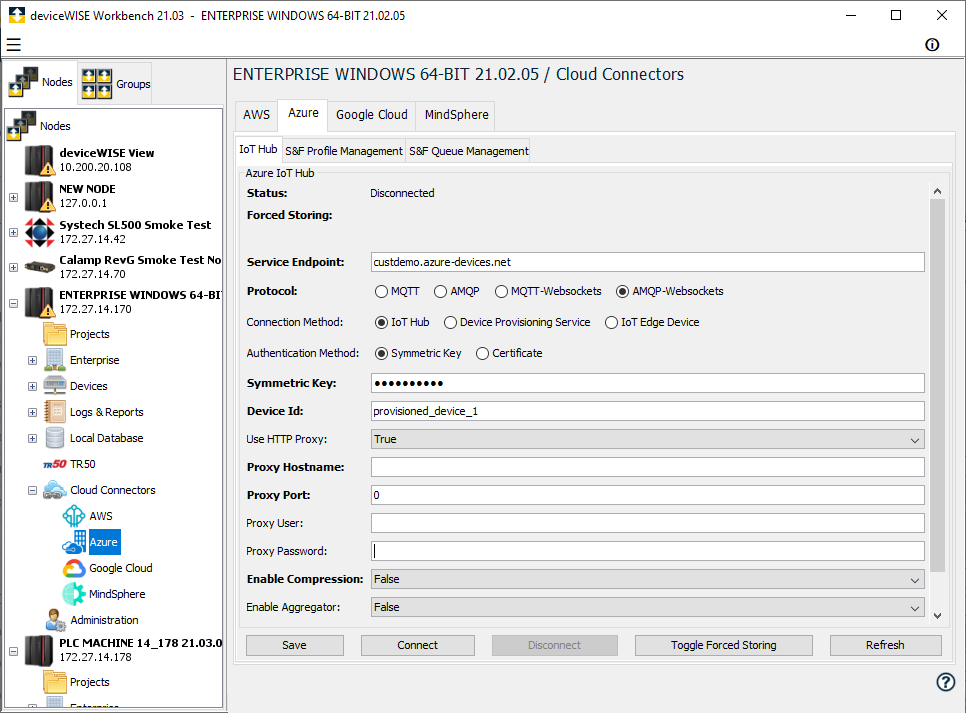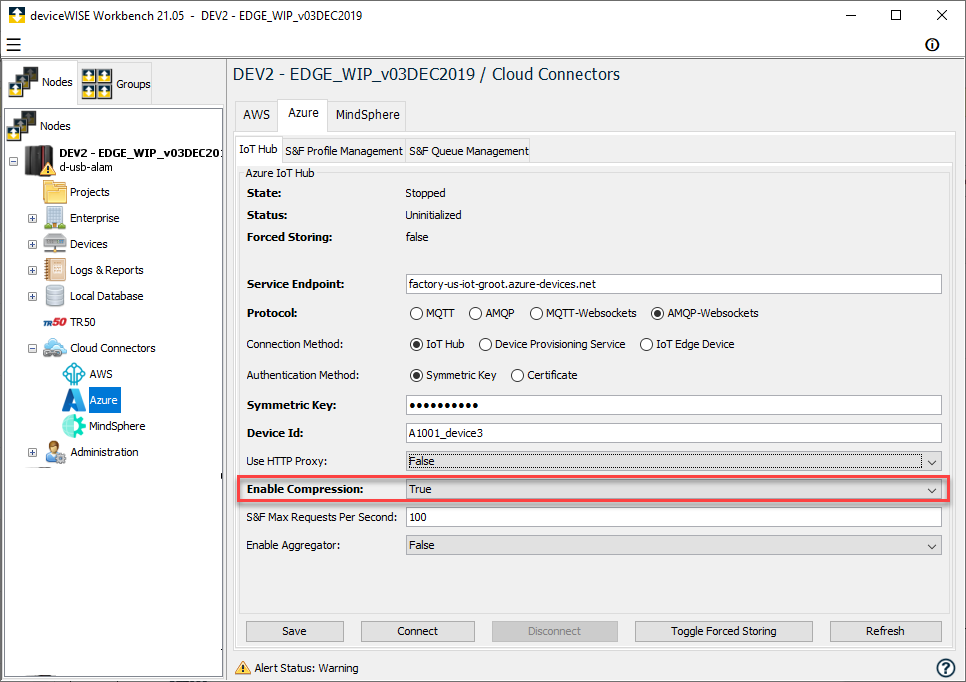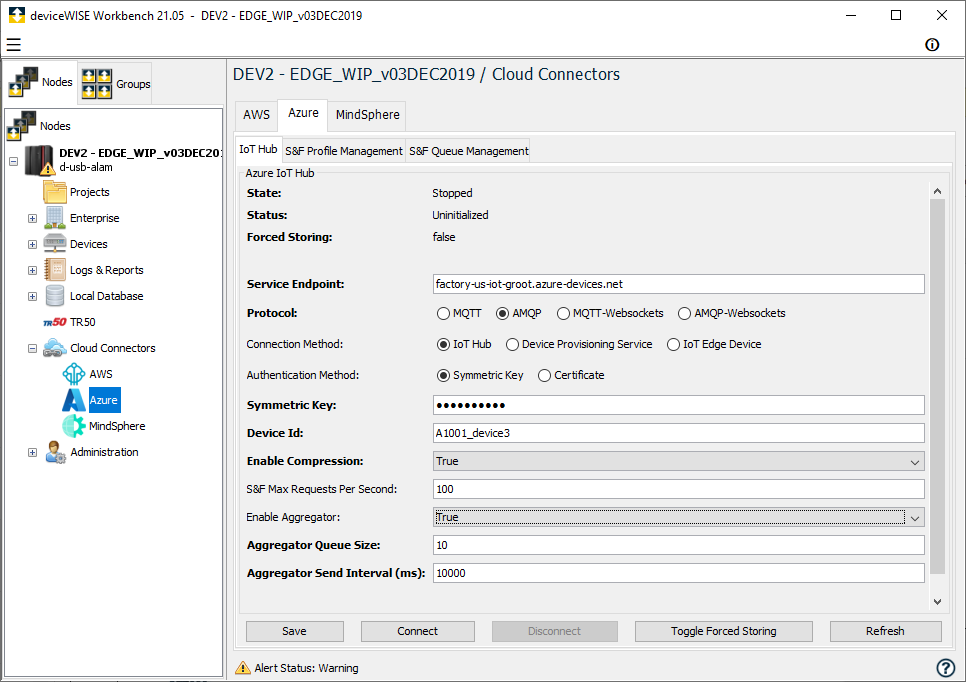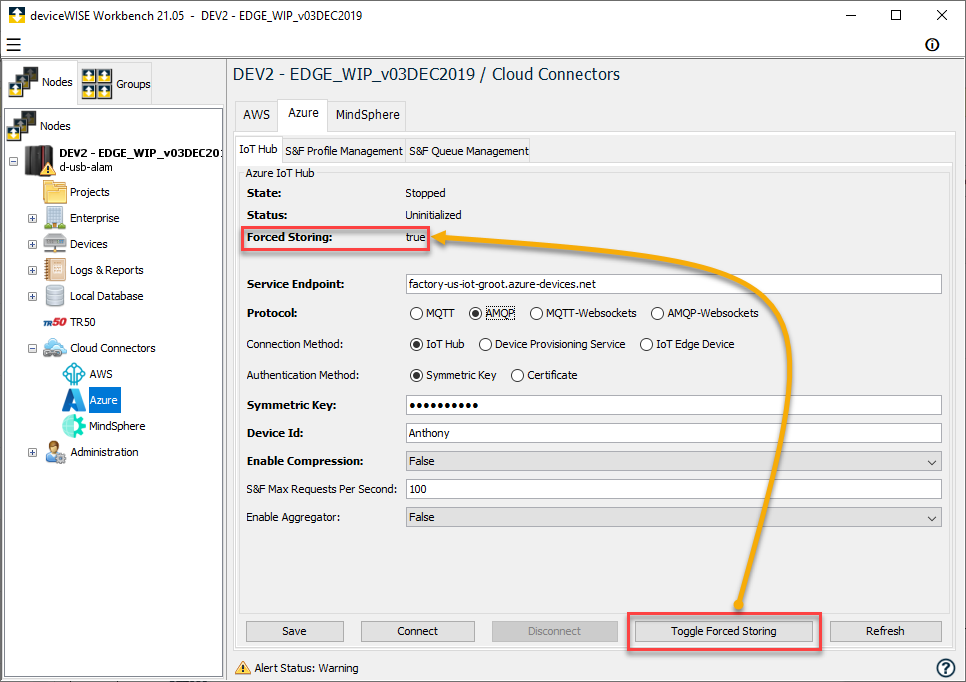This section describes the Optional Connection Azure IoT Settings.
To Connect deviceWISE to your Azure IoT Hub through Proxy:
- On the deviceWISE workbench go to the node you want to configure and select the Azure under Cloud Connectors

- Click Protocol drop-down and select MQTT-WebSocket or AMQP-WebSocket.
- Click Authentication Method and do one of the following:
- Select Symmetric Key and enter the Symmetric Key in the Symmetric Key field.
- Select Certificate and enter the Certificate and Private Key in the respective fields.
- Click the Use HTTP Proxy drop-down and select True.
- Enter the Proxy Hostname.
- Enter the Proxy Port Field.
- Enter the Proxy User and Proxy Password, if required.
- Click Connect.
To make deviceWISE compress data before sending to Azure using the Deflate Algorithm (RFC 1951), select the Enable Compression drop-down and set it to True. The data needs to be decompressed in the Azure side.
deviceWISE aggregates messages up to a specific number of messages or up to a certain amount of time. This is only available on the AMQP and AMQP-WebSocket protocols. The Aggregator Queue Size field defines the number of messages that must be in the aggregators queue before it will attempt to send. The Aggregator Send Interval (ms) field defines the time to wait before sending the queue. For example, if the queue fills up to the Queue Size before the Send Interval expires the aggregator will send all messages in the queue. Alternatively, if the Send Interval expires before the Queue is full it will also send all messages in the queue.
- On the deviceWISE workbench go to the node you want to configure and select the Azure under Cloud Connectors

- Click Protocol drop-down and select AMQP or AMQP-WebSocket.
- Click the Enable Aggregator drop-down and select True.
- Enter the Aggregator Queque Size.
- Enter the Aggregator Send Interval (ms) where the Send Interval is a value in Milliseconds.
When Forced Storing is enabled all messages will be sent to a Store and Forward Queue if enabled by the Trigger Action. To enable Forced Storing, click Toggle Forced Storing. Forced Storing turns True.